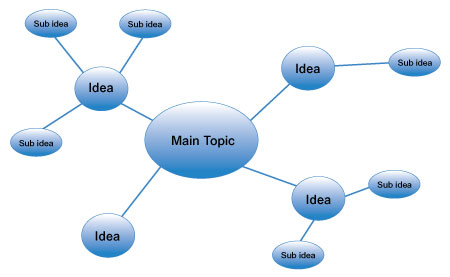2.2 STEM occupations and skills
The government has produced a report on Labour market and skills projections: 2020 to 2035 [Tip: hold Ctrl and click a link to open it in a new tab. (Hide tip)] outlining the types of jobs in the UK labour market, and the skills workers will need, up to 2035.
Activity 3 Thinking about your skills
Using the labour market skills report as a prompt, draw a spider diagram (sometimes called a mind map) of your skills and experience matching them to the kinds of jobs that are likely to be available in your field. Also note where you think you might need additional training if you were going to enter this area of work.

You can draw your diagram by hand or using a mind-mapping tool such as FreeView that is free to download and use.
You’ve researched different areas of growth in STEM employment and thought about which areas are likely to match your skills. You might also want to consider going to further study or training to update your skills and knowledge.
